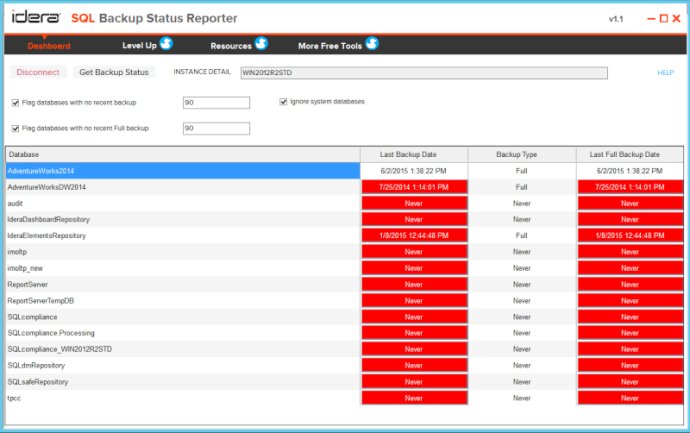This software enables speedy detection of databases without backups while also providing a history of previous backups including dates and types. It also boasts a user-friendly grid view for seamless sorting and easy identification of full and differential backups for a variety of databases.

The software offers a simplified grid view for easy sorting and navigation, making it effortless to identify full and differential backups for many databases. It also allows users to connect to the cloud and run SQL Backup Status Reporter in the cloud (provisional).
One of the key features of this software is its ability to identify missed backups. Users can determine which SQL databases have not had a recent full backup completed, enabling them to take corrective action.
Furthermore, the software enables users to see backup history, with the ability to understand if backups are full, differential, or log backups. Users can quickly identify if it has been a significant amount of time since a full backup was performed across databases.
SQL Backup Status Reporter presents a graphical view of the latest SQL database backups through its grid view feature. It shows the type of backup and date and time completed for each database. Additionally, users can view both full and differential backups for multiple databases all on the same console.
In terms of connectivity, the software allows users to connect to database instances hosted in the cloud, such as SQL Server on Azure Virtual Machine (VM), SQL Server on Amazon Elastic Compute Cloud (EC2), and SQL Server on Amazon Relational Database Service (RDS). It is also possible to run on virtual machines hosted in the cloud, such as Windows on Azure Virtual Machine (VM) and Windows on Amazon Elastic Compute Cloud (EC2).
Overall, SQL Backup Status Reporter offers a simple yet powerful solution for users to manage their SQL Server backups, enabling them to identify missed backups and view backup history with ease.
Version 1.1.0.1: This is a major product update